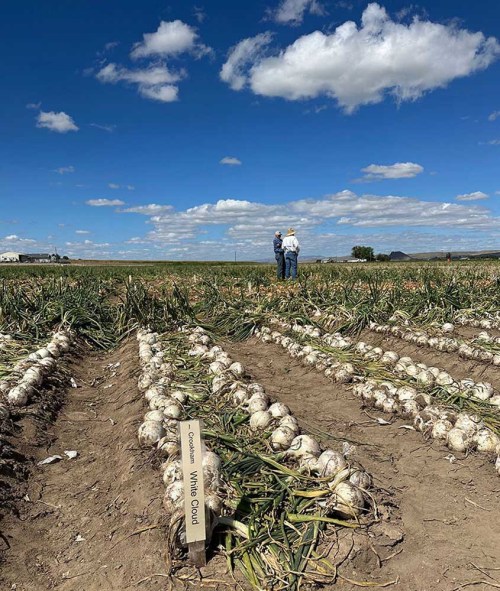Onions look better this year in SW Idaho, SE Oregon
Published 8:15 am Friday, September 1, 2023

- Part of a research plot featured at the Oregon State University Malheur Experiment Station’s Onion Variety Day Aug. 30. Courtesy of Kris Crookham/Crookham Co.
Jarom Jemmett’s onion crop looks better this year than in 2022 despite some heavy, late rain.
“I don’t think it will affect quality at all,” he said of Hurricane Hilary remnant rain that hit southeastern Oregon and southwest Idaho, a major onion-production region, Aug. 20-21. “It did delay harvesting.”
Trending
“From what I can see, the quality is better than what we have had for the last two years,” Jemmett, the Idaho Onion Growers Association president and a farmer in the Notus-Parma area, said Aug. 30. While yields look “better but still not perfect,” quality is approaching long-term norms.
Stands looked better this year, he said.
“We did not have the wind, like some years, that wipes out a bunch of acres,” Jemmett said.
“I don’t think overall in the area it’s a bin-buster, but it’s certainly a little better than last year,” said Bruce Corn, who farms between Ontario and Nyssa, Ore.
Snowpack was well above normal, providing ample irrigation water, which helped onions and other crops, he said.
Last year, onion quality was good but yields were a bit below average, Corn said.
Trending
“Every indication is that quality should be fine this year,” he said. “Size is a little better than last year.”
Crop quality, yield and bulb size are around long-term averages, said Lyndon Johnson, sales development manager with Crookham Co., a seed producer based in Caldwell, Idaho. He expects about 21,500 acres of onions to be harvested in the area this year.
“We will have jumbo, colossal and super colossal — much better size profiles than 2022,” Johnson said.
Planting and early seasons were not as cold and windy as in 2022, so emergence was better, he said. Later, onions benefited from fewer days with temperatures at or above 100 degrees — about 10, down from 27 last year.
Crookham Co. showed onion varieties in an Aug. 29 field near Wilder, Idaho. Oregon State University Malheur Experiment Station variety trials, involving Crookham and many other companies, were featured at a field day Aug. 30 south of Ontario.
OSU’s trial onions were planted a bit later than normal, said Stuart Reitz, Malheur station director.
“But growing conditions over the summer have been pretty good,” he said. “It has been warm but not too hot. Onions had a chance to catch up.”
Late August’s heavy rain, 2 to 4 inches depending on location, “was a complication nobody foresaw,” Reitz said.
Onion varieties have different maturity schedules, and “there were fields where onions were still standing up” rather than on the ground for drying, he said.
Heavy storms raise the risk that water splashes a pathogen into the plant neck or stem, from which it can move into the bulb. Recent rain was plentiful but gentle in many areas, “so we didn’t have as much splashing up into the stem compared to some storms,” Reitz said.
However, “the rain and added humidity caused some foliar disease problems at the end of the season,” he said. Impacts are yet to be determined.
Thrips, insect pests that carry Iris Yellow Spot Virus, “are always a concern,” Reitz said. They arrived a bit later than usual in many locations, and pressure varied by field.









